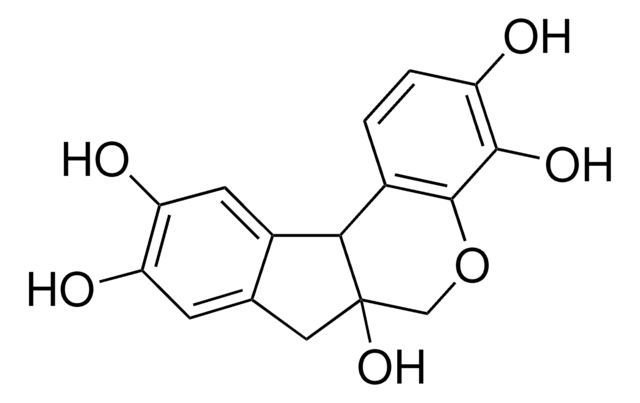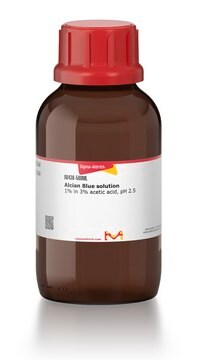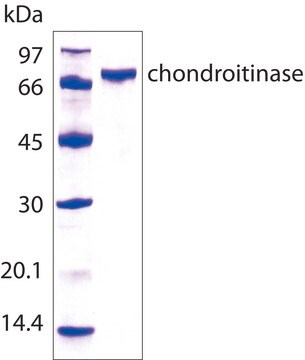89640
Toluidine Blue
8.74% (ZN (THEORY)), for microscopy (Hist., Vit.)
Sinónimos:
Tolonium chloride; Basic Blue 17
About This Item
Productos recomendados
grado
for microscopy (Hist., Vit.)
Nivel de calidad
Ensayo
8.74% (ZN (THEORY))
Formulario
powder or crystals
técnicas
microbe id | staining: suitable
color
green to very dark green
solubilidad
methanol: 0.01 g/10 mL, blue to very deep blue
εmax
≥800 at 621-636 nm in water
idoneidad
suitable for microscopy
aplicaciones
diagnostic assay manufacturing
hematology
histology
temp. de almacenamiento
room temp
cadena SMILES
[Cl-].[Cl-].Cl[Zn]Cl.Cc1cc2N=C3C=CC(\C=C3Sc2cc1N)=[N+](\C)C.Cc4cc5N=C6C=CC(\C=C6Sc5cc4N)=[N+](\C)C
InChI
1S/2C15H15N3S.4ClH.Zn/c2*1-9-6-13-15(8-11(9)16)19-14-7-10(18(2)3)4-5-12(14)17-13;;;;;/h2*4-8,16H,1-3H3;4*1H;/q;;;;;;+2/p-2
Clave InChI
DAQXTSXITPUGRG-UHFFFAOYSA-L
Descripción general
Aplicación
- to demonstrate amyloid; DNA in plant material, mast cells, Nissl substance, nuclei, and sulfatides
- in metachromatic staining of sulfated mucins and related materials
- as staining agent to identify the development and accumulation of the cartilage matrix, proteoglycans for isolation and culture of mesenchymal stem cells from mouse compact bone.
- staining of mucins in water-miscible resins and of nucleic acids in epoxy resins(1)
Acciones bioquímicas o fisiológicas
Código de clase de almacenamiento
11 - Combustible Solids
Clase de riesgo para el agua (WGK)
WGK 3
Punto de inflamabilidad (°F)
Not applicable
Punto de inflamabilidad (°C)
Not applicable
Equipo de protección personal
Eyeshields, Gloves, type N95 (US)
Elija entre una de las versiones más recientes:
¿Ya tiene este producto?
Encuentre la documentación para los productos que ha comprado recientemente en la Biblioteca de documentos.
Los clientes también vieron
Nuestro equipo de científicos tiene experiencia en todas las áreas de investigación: Ciencias de la vida, Ciencia de los materiales, Síntesis química, Cromatografía, Analítica y muchas otras.
Póngase en contacto con el Servicio técnico








